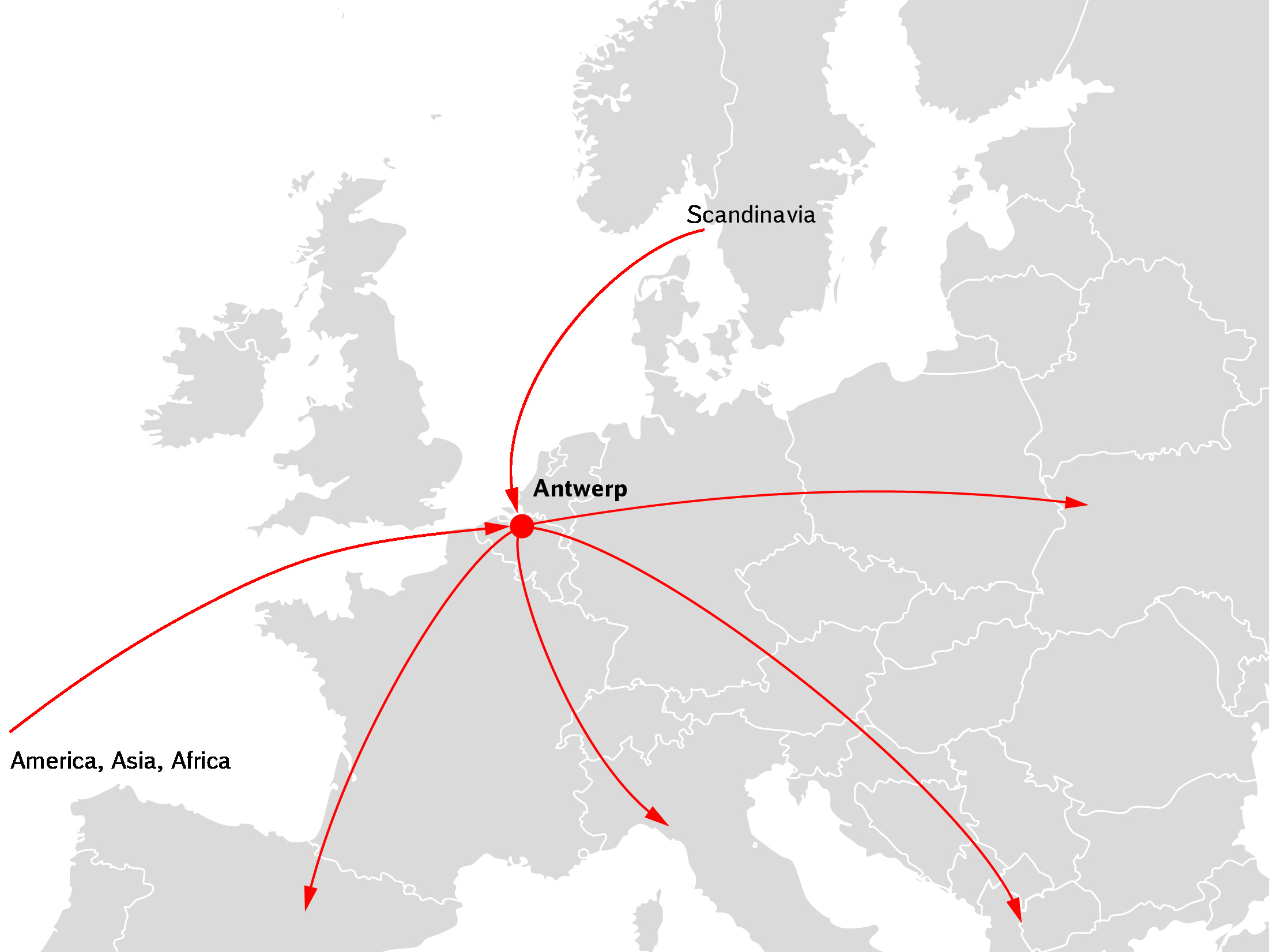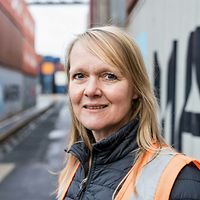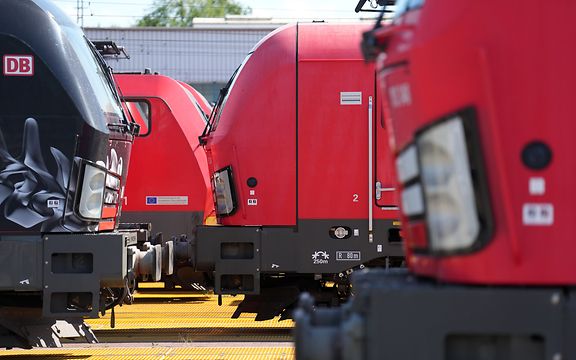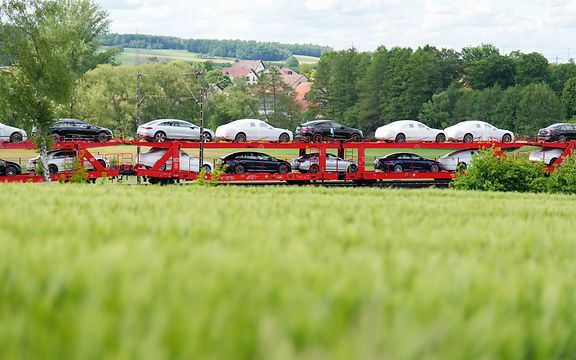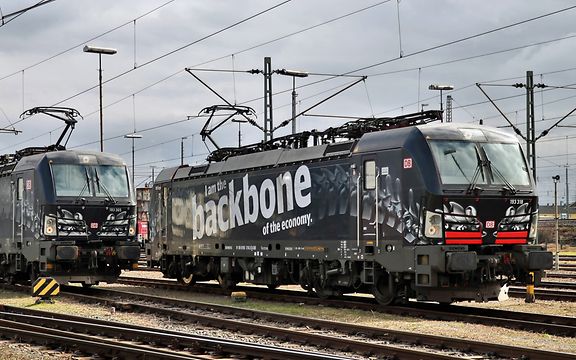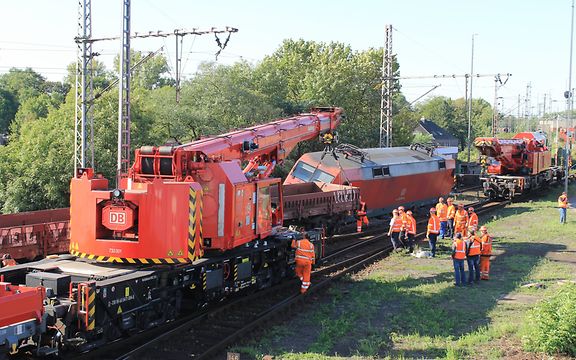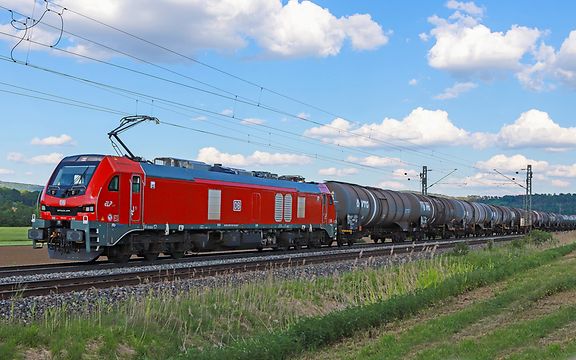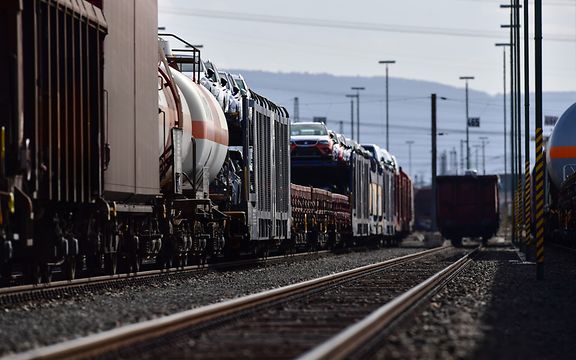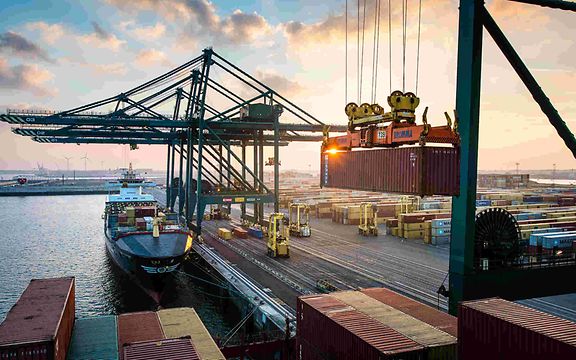Cities, countries, oceans #3: Antwerp larger than life
Via the Port of Antwerp: DB Cargo and Optimodal keep container traffic running smoothly
A European rail company and a Netherlands-based logistics provider meet up in Neuss, Germany to send goods all over the world through a Belgian port... No, that wasn't the beginning of a joke — in fact it's more like a success story. One that starts and ends in the Port of Antwerp. Since 2020 Optimodal, an operator, and DB Cargo have been running one train packed with containers three times a week from Antwerp to Neuss and back again. It's environmentally friendly, flexible and on time.
Smart dispatching is needed
This is all easier said than done, however. Large ports are dynamic logistics hubs presenting a myriad of challenges: the slots at the terminals are always in high demand, especially if they have a rail link. Antwerp has five container terminals accessible to deep-sea vessels. DB Cargo calls at three of them every week from Neuss – two on the left bank and one on the right bank of the river Scheldt, which flows into the North Sea behind Antwerp. The fact that the grounds of the port stretch far beyond both banks of the river is particularly significant for rail transport: "As soon as something in the schedule or terminal occupancy changes, there is a considerable amount of shunting to do," says Karsten Scheidhauer, Managing Director of Optimodal. "And changes are actually a normal occurrence. Ships from overseas often have massive delays. This has an impact on the entire logistics chain."
The Port of Antwerp
The Belgian port on the Sheldt estuary is one of the largest ports in the world. Four hundred kilometres of roads and 1,113 km of railway tracks are used to handle incoming and outgoing goods. Each berth is equipped with two to five tracks. Five capital cities lie within a 250 kilometre radius of the port, as does the German Rhine-Ruhr metropolitan region with a total of 10 million inhabitants. Sixty per cent of the European Union's purchasing power is located within a radius of 500 km. Located 80 kilometres inland, this deep-sea port has another special feature: even the biggest deep-sea vessels can enter here, thanks to the largest lock in the world.
In principle there are fixed annual timetables for maritime shipping. This results in fixed time slots for loading and unloading at the terminals – everything is regulated down to the minute. If a ship ends up waiting for longer than planned at its port of origin, however, it can't arrive at its destination on time. This has ramifications for all subsequent processes. "Covid has further compounded the delays, especially in the ports in the Far East," explains Karsten Scheidhauer. "This causes a real domino effect. Terminal occupancy has to be reorganised and stored goods are not shipped off. All this feeds directly into the next delay,with logistics companies on facing huge efforts in terms of scheduling."
Effective collaboration
Nevertheless: this is a success story. DB Cargo and Optimodal have already transported almost 7,000 TEUs along the Antwerp-Neuss route since the start of the partnership in September 2020, whereby volumes are rising, there is further potential to be exploited, and, on the whole, things are running smoothly. This is because Optimodal brings in-depth knowledge of the logistics business to the partnership, from scheduling and administrative requirements to the complicated customs clearance procedures that are important in such a large international port. DB Cargo ensures flexibility and the best utilisation of all available resources – including access to the entire DB Cargo network. Of the containers that arrive in Neuss, two thirds stay in the extended region, i.e. Rhine-Ruhr and Mosel, Trier-Luxembourg. The other third is fed into the DB Cargo network: from the Optimodal terminals at the Rhine port of Neuss, the journey then continues, mainly towards Switzerland, Southern and Eastern Europe. "This partnership is going really well", says Karsten Scheidhauer delightedly. "Because we have trust. Each of us has an understanding of the other's daily business situations at all levels. We work together hand in glove. That is part of the success. What else is needed? Nerves of steel! Logistics is an exciting business. Construction work on the rail network, customers who are in a bigger and bigger hurry and, for the last two years, the pandemic – there is no shortage of pressure and imponderables." Nevertheless, Karsten Scheidhauer is confident that more is possible. Optimodal and DB Cargo want to continuously bring more containers onto the rails between Neuss and Antwerp. Climate-friendly, flexible and punctual.
What does TEU mean?
In container shipping, TEU is an abbreviation for the "Twenty-foot Equivalent Unit" (a 20-foot container), also known as the standard container. This container size is internationally standardised and is therefore also used to express the loading capacities of transport ships or the annual throughput in ports.
Get in touch with our expert.
Andrea Clasen-De Cunto
Head of Accounts West, Carrier Sales Intermodal, DB Cargo AG
